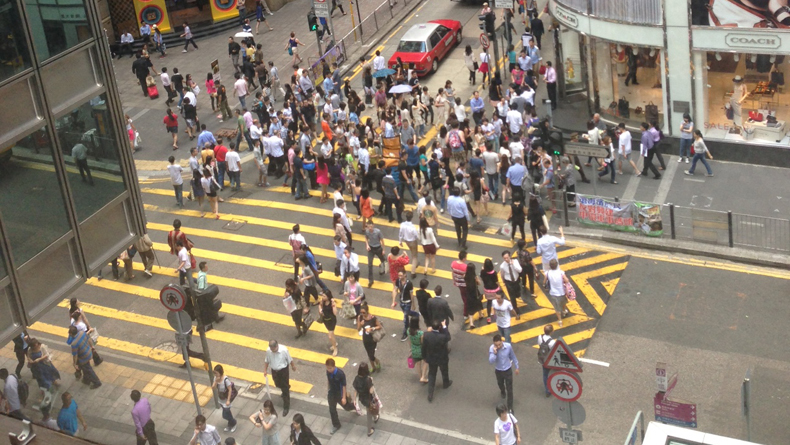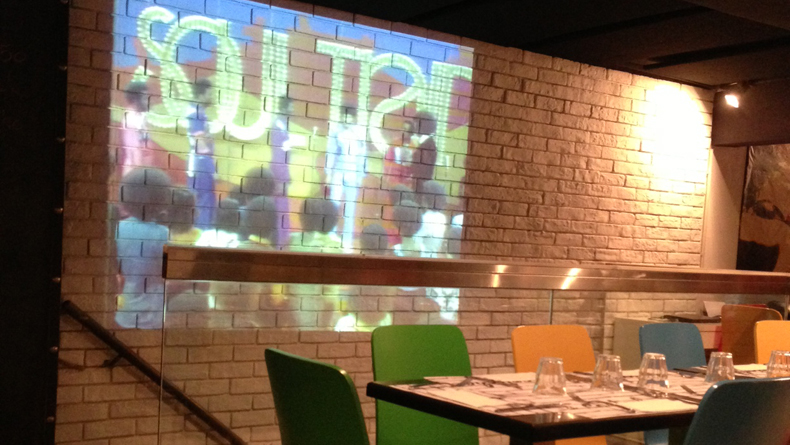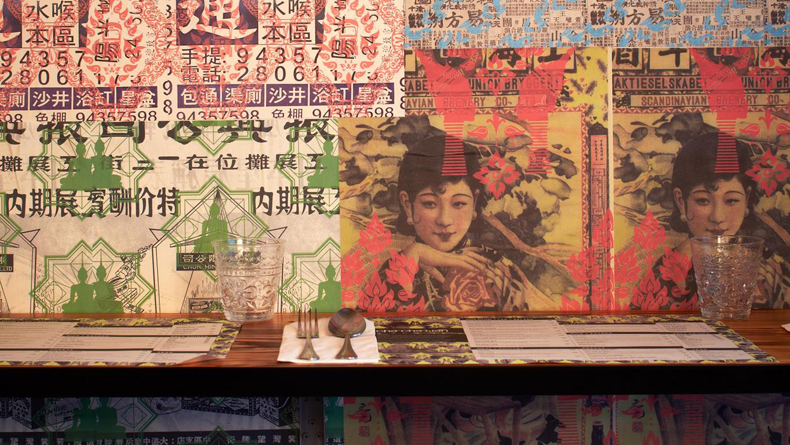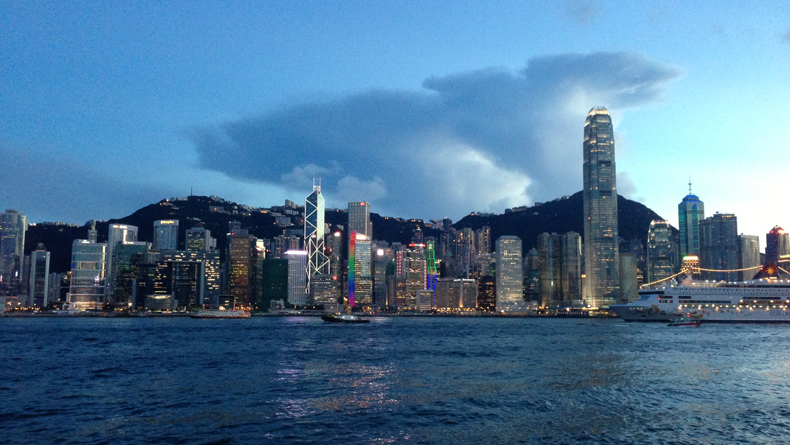Hong Kong Right Now
Hong Kong is constantly moving, always forward and never backwards. Standing still on the street is enough to warrant a push or a shove from a stranger without the familiar head nod or "sumimasen" of Japan. Even the old, grumpy air-conditioners that cling from buildings above will assault you with grimy water if you aren’t fast enough. If you leave the country for more than 10 days, don’t be surprised if some of your favorite stores and restaurants have changed when you return.
“A Hong Kong second is a New York minute.”
For an expat who moved to Hong Kong immediately after living in Tokyo, I see how the two cities complement each other perfectly. Only a four-and-a-half hour flight away, Hong Kong is the place to go if you want to visit a truly international city without leaving Asia.
Bamboo scaffolding and construction are a permanent fixture in Hong Kong. The city is constantly tearing things down and building something new. As a result, it has a never-ending list of new places to try and many things that are “of-the-moment.” There’s a growing hipster scene in Hong Kong, and while that might irk you in places like, say, Seattle or Toronto, it’s great to see a supply and demand for more independent, culturally conscious stores, restaurants and events.
West End Wit
Po Hing Fong, a.k.a. “Po Ho.” is where you will find many of the venues that contribute to this growing hipster scene. Take a weekend stroll along and off Tai Ping Shan and you’ll come across places like Teaka, an organic tea café that specializes in milk tea. I personally love sitting outside in the alley and drinking the shop’s masala chai. Walk up to Café Deadend for a morning coffee or light lunch, or go next door to Po’s Atelier, a boutique bakery that bakes and cooks ingredients from scratch. For upbeat jazz and a bright, airy ambience that serves dishes like scrambled natto eggs, chorizo, and toasted sourdough, retreat to Shelter Lounge on New Street. Make sure to make it before 2 p.m. though. Unfortunately I have missed two lunch services by showing up late after a very lazy morning.
There’s a lot more to explore in this neighborhood (including galleries and restaurants) but most of the fun lies in ducking in and out of the small shops and noticing the graffiti sprayed walls. Although a lot smaller and newer, this area can be compared to the quaint stores in Daikanyama or along the Meguro River near Naka-Meguro Station.
Po Ho is also walking distance to the stores filled with ironic trinkets on Gough Street and new restaurants along Aberdeen Street.
Of The Moment
Because Hong Kong is constantly renewing and reinventing itself, there are always much-hyped and buzzed-about restaurants. Two separate friends of mine have tried to eat at the newly opened Chachawan along Hollywood Road, only to be turned away because of waiting times of an hour and two and a half hours. Chachawan serves food from Issan (a region in Thailand), and is manned by Chef Adam Cliff, a protégé of the acclaimed Thai chef David Thompson. Do note that the restaurant doesn’t take reservations (hence the long waiting lines) and closes at 11 p.m. The good thing is, it just started serving lunch from 12-3 p.m.
Another restaurant that has food bloggers and Instagrammers posting away is Little Bao. “Bao” refers to white Chinese flour buns. According to the restaurant’s website, “chef May Chow has expanded upon her original bao (a sweet soy braised pork belly, pickled leek cucumber salad with special sesame sauce with a steamed fluffy white Chinese bun) to open up the first Little Bao restaurant in Central’s Soho district.”
When I visited the restaurant a few days ago with a friend, we were told that they weren’t officially open yet. Little Bao, dubbed as the home of the signature Asian burger, would open in a few weeks (it had only soft launched). We were however, welcome to call to make dinner reservations. I was surprised that so many people already knew about and ate at a place that wasn’t even officially open.
Let’s be frank. The mass interest in new eating spots like these enchants, excites and annoys me all at the same time. But that’s Hong Kong in a nutshell. The constant rush of excitement, anxiety and impatience is what fuels this mega-city and its inhabitants.
By chance, I happen to live nearby many of the places mentioned above, so this is a very west-end-centric view of what’s interesting these days. What you won’t find in this list are any Japanese restaurants (although yakitori and ramen are very popular in Hong Kong), because I know from experience that if you have access to Japanese food in Japan, there’s no point eating it elsewhere.
Classic Hong Kong
When you do visit Hong Kong, you must “do as the Romans do.” Have an expensive boozy hotel brunch like Nicholini’s or opt for the (more down-to-earth) Pawn, book dinner ahead at a private kitchen like Magnolia, eat local at a cha chaan teng, and take in the magnificent views of the electric city over a drink at Sevva.
If you’d like to dig a little deeper into old-school Hong Kong, head to Yau Ma Tei on the Kowloon side to bargain for traditional Chinese kitchenware at discount prices, wander through the fabric market in Sham Shui Po, or delight in a traditional dessert at Yuen Kee on Centre Street. WATAAAAH!! The Bruce Lee Foundation has also organized an exhibition called Bruce Lee: Kung Fu Art Life at the Hong Kong Heritage Museum.
International Hong Kong
And lastly, enjoy the authentic American grub at places like Stone Nullah Tavern in Wan Chai, or Awakening Cafe in Sai Ying Pun, and indulge yourself in the abundance of Latin American food joints like Catalunya, Chicha, BCN, Iberico & Co., Socialito and Brickhouse.
The Deets
Getting There: Cathay Pacific, Japan Airlines and ANA fly directly to Hong Kong from Tokyo.
Where to Stay: Try staying at the many smaller boutique hotels like Ovolo and Butterfly.
More Information: For more information visit the website of the Hong Kong Tourism Board.














